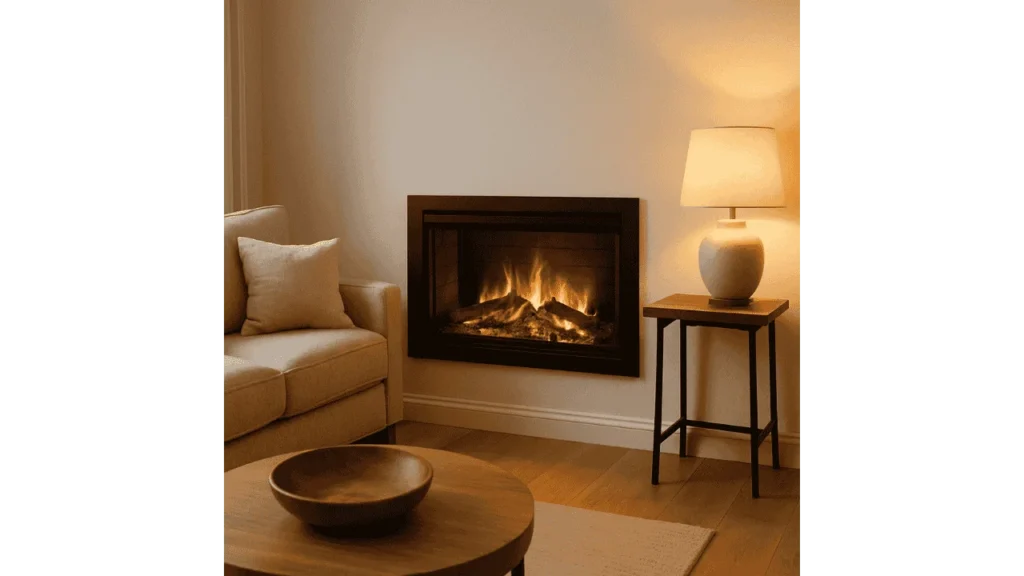When you invest in an electric fireplace, you’re paying for more than flickering flames; you’re adding a heating appliance you expect to perform year after year. Typical lifespans hover between ten and twenty years, and high‑quality inserts can exceed that window with diligent care. Knowing which factors shorten or extend service life, brand pedigree, run‑time habits, and maintenance discipline helps you squeeze maximum value from every heating season.
Typical Lifespan
Most wall mounts and inserts leave the factory engineered for 10–20 years of normal residential use. Budget units frequently show fatigue earlier, around the eight‑to‑ten‑year mark, when LEDs dim or heaters take longer to reach temperature. Premium models from Dimplex, Modern Flames, and Napoleon carry sturdier wiring, fan bearings, and control boards, allowing many owners to enjoy two decades of reliable ambiance. Appliance analyst Tara Niles summarizes the trend well:
“With reputable brands, the fireplace usually retires because décor tastes change, not because the motor quits.”
What Affects Longevity?
Build Quality and Brand Reputation
Manufacturers that invest in thicker fan shafts, higher‑temperature wiring jackets, and long‑life LED arrays deliver products that shrug off thermal fatigue. Bargain imports often look similar on the surface but rely on lightweight components whose tolerances tighten and fail sooner under continuous heat.
Usage Patterns
Daily, multi‑hour operation piles heat cycles onto coils and drivers, accelerating metal fatigue. In homes where the fireplace runs only on chilly weekends or special occasions, the same components experience far fewer stress events, pushing life expectancy beyond twenty years.
Maintenance Habits
Dust is enemy number one for electric fireplaces. When lint blankets intake vents, the heating element runs hotter, fans strain, and circuit boards cook. A quick monthly pass with a vacuum brush across vents and fans lowers internal temperatures dramatically. Lighting technician Felix Harper advises,
“Think of dust as insulation you never asked for; strip it away, and every internal part runs cooler, quieter, and longer.”
Read More: Can You Plug an Electric Fireplace into a Surge Protector?
Component Durability
The LED flame engine is typically rated up to 50,000 hours, roughly seventeen years of eight‑hours‑a‑day operation, before brightness drops below showroom levels. Heating coils and blower motors are designed to last the full breadth of the appliance’s advertised service life, generally ten to twenty years, as long as users avoid blocked vents and voltage fluctuations.
Signs It’s Time to Replace
Declining performance reveals itself gradually: heat output that once warmed a room now feels uneven, while the ember bed grows faint or flickers unpredictably even after bulb or LED replacement. A persistent increase in fan noise, rattling, or grinding signals bearing wear that can lead to complete blower failure. When replacement parts become scarce or repairs outnumber cozy evenings enjoyed, the unit has effectively reached the end of its economical life.
How to Maximize Lifespan?
A straightforward care routine keeps critical parts cool and clean. Vacuum the intake and exhaust grilles every month, paying special attention to pet hair and household lint that cling to vent screens. Replace light sources at the first hint of dimming to prevent driver circuits from overcompensating. Once a year, ideally before peak‑use season, remove the service panel (following the manufacturer’s directions) and inspect wire connectors, thermostat contacts, and fan mounts for discoloration or looseness. Always plug the fireplace into a dedicated wall outlet rather than a power strip to avoid voltage sag and heat‑inducing resistance.
Electric vs. Traditional Fireplaces: Lifespan Perspective
Because an electric fireplace produces heat without combustion, it suffers none of the creosote build‑up or chimney corrosion that plagues wood stoves, nor the burner maintenance associated with gas logs. That design simplicity explains its relatively low upkeep, even if its service life, roughly ten to twenty years, falls short of the typical gas unit’s twenty‑plus‑year span. Wood‑burning hearths can last indefinitely, but only when owners budget for annual chimney sweeps and periodic masonry repairs.
Final Takeaways
When cared for properly, an electric fireplace offers decades of reliable warmth and illusionary flames with far fewer chores than its gas or wood counterparts. Choose a unit from a respected brand, keep airflow pathways clear, and act on early warning signs rather than waiting for total shutdown. Follow those simple practices, and your fireplace will glow through countless winters, long after the novelty of its first switch‑on has faded.
- 27 Farmhouse Fireplace Ideas That Bring Warmth & Charm - August 18, 2025
- 25 Fireplace Lighting Ideas to Illuminate Your Hearth - August 7, 2025
- How to Replace an Electric Fireplace Switch? - August 5, 2025



